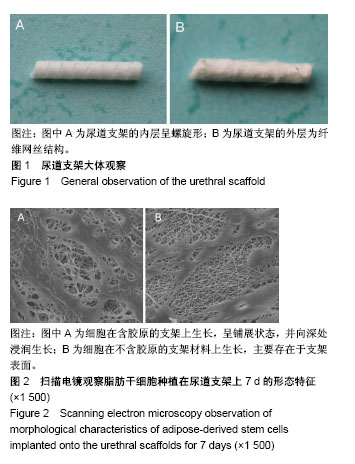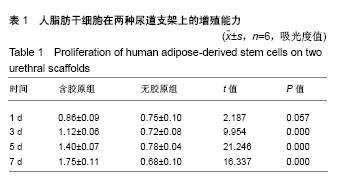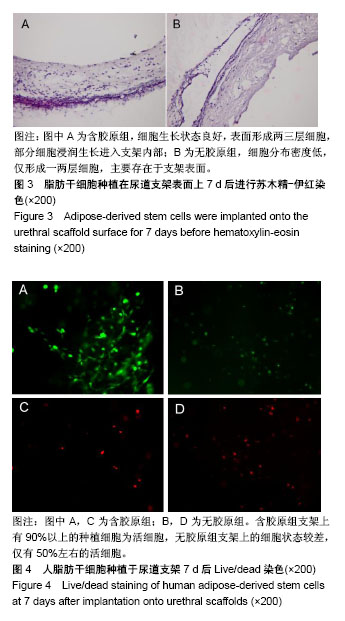| [1] Wessells H, Angermeier KW, Elliott S, et al. Male Urethral Stricture: American Urological Association Guideline. J Urol. 2017;197(1):182-190.[2] Hampson LA, McAninch JW, Breyer BN. Male urethral strictures and their management. Nat Rev Urol. 2014;11(1): 43-50.[3] Zaid UB, Lavien G, Peterson AC. Management of the Recurrent Male Urethral Stricture. Curr Urol Rep. 2016;17(4): 33.[4] Barbagli G, Lazzeri M. History and evolution of dorsal onlay urethroplasty for bulbar urethral stricture repair using skin or buccal mucosal grafts. Urologia. 2007;74(4):233-241.[5] Marzorati G, Ghinolfi G, Pachera F, et al. Bladder and buccal mucosa graft in urethral stricture reconstruction. Urologia. 2008;75(3):177-179.[6] Kumar A, Das SK, Trivedi S, et al. Substitution urethroplasty for anterior urethral strictures: buccal versus lingual mucosal graft. Urol Int. 2010;84(1):78-83.[7] O'Connell JE, Cullen IM, Murphy C, et al. Buccal mucosa urethroplasty: a 10-year retrospective review of maxillofacial and urological outcomes. Ir J Med Sci. 2015;184(4):761-767.[8] Monn MF, Waters JA, Mellon MJ. Use of rectal mucosal grafts in substitution urethroplasty: an early series. Transl Androl Urol. 2018;7(6):907-911.[9] De Kemp V, de Graaf P, Fledderus JO, et al. Tissue engineering for human urethral reconstruction: systematic review of recent literature. PLoS One. 2015;10(2):e0118653.[10] Bajek A, Gurtowska N, Olkowska J, et al. Adipose-Derived Stem Cells as a Tool in Cell-Based Therapies. Arch Immunol Ther Exp (Warsz). 2016;64(6):443-454.[11] 符伟军,史建国,王晓雄,等.人脂肪间充质干细胞诱导分化尿路上皮细胞的研究[J]. 中华实验外科杂志, 2012, 29(5) : 927-929.[12] Mangera A, Chapple CR. Tissue engineering in urethral reconstruction--an update. Asian J Androl. 2013;15(1):89-92.[13] Schofer MD, Boudriot U, Leifeld I, et al. Characterization of a PLLA-collagen I blend nanofiber scaffold with respect to growth and osteogenic differentiation of human mesenchymal stem cells. Scientific World Journal. 2009;9:118-129.[14] Osman NI, Hillary C, Bullock AJ, et al. Tissue engineered buccal mucosa for urethroplasty: progress and future directions. Adv Drug Deliv Rev. 2015;82-83:69-76.[15] Liu Y, Ma W, Liu B, et al. Urethral reconstruction with autologous urine-derived stem cells seeded in three-dimensional porous small intestinal submucosa in a rabbit model. Stem Cell Res Ther. 2017;8(1):63.[16] Wang F, Liu T, Yang L, et al. Urethral reconstruction with tissue-engineered human amniotic scaffold in rabbit urethral injury models. Med Sci Monit. 2014;20:2430-2438.[17] Li H, Xu Y, Xie H, et al. Epithelial-differentiated adipose-derived stem cells seeded bladder acellular matrix grafts for urethral reconstruction: an animal model. Tissue Eng Part A. 2014;20(3-4):774-784.[18] Ziaran S, Galambošová M, Danišovi? L. Tissue engineering of urethra: Systematic review of recent literature. Exp Biol Med (Maywood). 2017;242(18):1772-1785.[19] Larsson HM, Vythilingam G, Pinnagoda K, et al. Fiber density of collagen grafts impacts rabbit urethral regeneration. Sci Rep. 2018;8(1):10057.[20] Pinnagoda K, Larsson HM, Vythilingam G, et al. Engineered acellular collagen scaffold for endogenous cell guidance, a novel approach in urethral regeneration. Acta Biomater. 2016; 43:208-217.[21] Sartoneva R, Nordback PH, Haimi S, et al. Comparison of Poly(l-lactide-co-?-caprolactone) and Poly(trimethylene carbonate) Membranes for Urethral Regeneration: An In Vitro and In Vivo Study. Tissue Eng Part A. 2018;24(1-2):117-127.[22] Sartoneva R, Haaparanta AM, Lahdes-Vasama T, et al. Characterizing and optimizing poly-L-lactide-co-ε- caprolactone membranes for urothelial tissue engineering. J R Soc Interface. 2012;9(77):3444-3454.[23] Zhang K, Cao N, Guo X, et al. The fabrication of 3D surface scaffold of collagen/poly (L-lactide-co-caprolactone) with dynamic liquid system and its application in urinary incontinence treatment as a tissue engineered sub-urethral sling: In vitro and in vivo study. Neurourol Urodyn. 2018;37(3): 978-985.[24] Zhang K, Fu Q, Yoo J, et al. 3D bioprinting of urethra with PCL/PLCL blend and dual autologous cells in fibrin hydrogel: An in vitro evaluation of biomimetic mechanical property and cell growth environment. Acta Biomater. 2017;50:154-164.[25] Atala A, Bauer SB, Soker S, et al. Tissue-engineered autologous bladders for patients needing cystoplasty. Lancet. 2006;367(9518):1241-1246.[26] Kennedy KM, Bhaw-Luximon A, Jhurry D. Cell-matrix mechanical interaction in electrospun polymeric scaffolds for tissue engineering: Implications for scaffold design and performance. Acta Biomater. 2017;50:41-55.[27] Ingavle GC, Leach JK. Advancements in electrospinning of polymeric nanofibrous scaffolds for tissue engineering. Tissue Eng Part B Rev. 2014;20(4):277-293.[28] Li C, Xu YM, Song LJ, et al. Urethral reconstruction using oral keratinocyte seeded bladder acellular matrix grafts. J Urol. 2008;180(4):1538-1542.[29] Heller M, Frerick-Ochs EV, Bauer HK, et al. Tissue engineered pre-vascularized buccal mucosa equivalents utilizing a primary triculture of epithelial cells, endothelial cells and fibroblasts. Biomaterials. 2016;77:207-215.[30] Fu Q, Deng CL, Liu W, et al. Urethral replacement using epidermal cell-seeded tubular acellular bladder collagen matrix. BJU Int. 2007;99(5):1162-1165.[31] Orabi H, AbouShwareb T, Zhang Y, et al. Cell-seeded tubularized scaffolds for reconstruction of long urethral defects: a preclinical study. Eur Urol. 2013;63(3):531-538.[32] De Filippo RE, Kornitzer BS, Yoo JJ, et al. Penile urethra replacement with autologous cell-seeded tubularized collagen matrices. J Tissue Eng Regen Med. 2015;9(3):257-264.[33] Gu GL, Xia SJ, Zhang J, et al. Tubularized urethral replacement using tissue-engineered peritoneum-like tissue in a rabbit model. Urol Int. 2012;89(3):358-364.[34] Li Y, Wu J, Feng F, et al. A Preclinical Study of Cell-seeded Tubularized Scaffolds Specially Secreting LL37 for Reconstruction of Long Urethral Defects. Anticancer Res. 2017;37(8):4295-4301.[35] Davis NF, Cunnane EM, Mulvihill JJ, et al. The Role of Stem Cells for Reconstructing the Lower Urinary Tracts. Curr Stem Cell Res Ther. 2018;13(6):458-465.[36] 蔡炳,李科,脱颖,等.诱导多能干细胞向尿道上皮细胞分化体系的建立[J].中华腔镜泌尿外科杂志(电子版),2016, 10(3):40-43.[37] 杨旭芳,何旭,何牮,等.人脂肪干细胞向内皮分化最佳诱导体系的建立[J].中国老年学杂志,2010,30(5):611-613. [38] Li CL, Liao WB, Yang SX, et al. Urethral reconstruction using bone marrow mesenchymal stem cell- and smooth muscle cell-seeded bladder acellular matrix. Transplant Proc. 2013; 45(9):3402-3407. [39] Cao JQ, Liang YY, Li YQ, et al.Adipose-derived stem cells enhance myogenic differentiation in the mdx mouse model of muscular dystrophy via paracrine signaling.Neural Regen Res. 2016;11(10):1638-1643.[40] Tabatabaei Qomi R, Sheykhhasan M. Adipose-derived stromal cell in regenerative medicine: A review. World J Stem Cells. 2017;9(8):107-117. |
.jpg)



.jpg)
.jpg)